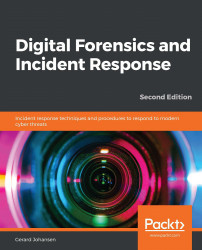In terms of preparation, incident response analysts should have the necessary tools at their disposal to acquire host-based evidence. The techniques that will be discussed within this chapter do not rely on any highly specialized technology, but rather on tools that can be acquired for little or no cost. It is critical that the tools that are selected for the acquisition of evidence are those that are provided by reputable sources, have been proven effective by other CSIRT personnel, and have been validated for efficacy prior to use. Outside of software, the only additional hardware that is required is external hard drives and common desktop computers.
When supporting an enterprise environment, it is a good idea for incident response personnel to have a solid understanding of the types of systems that are commonly deployed. For example, in an enterprise that utilizes...



